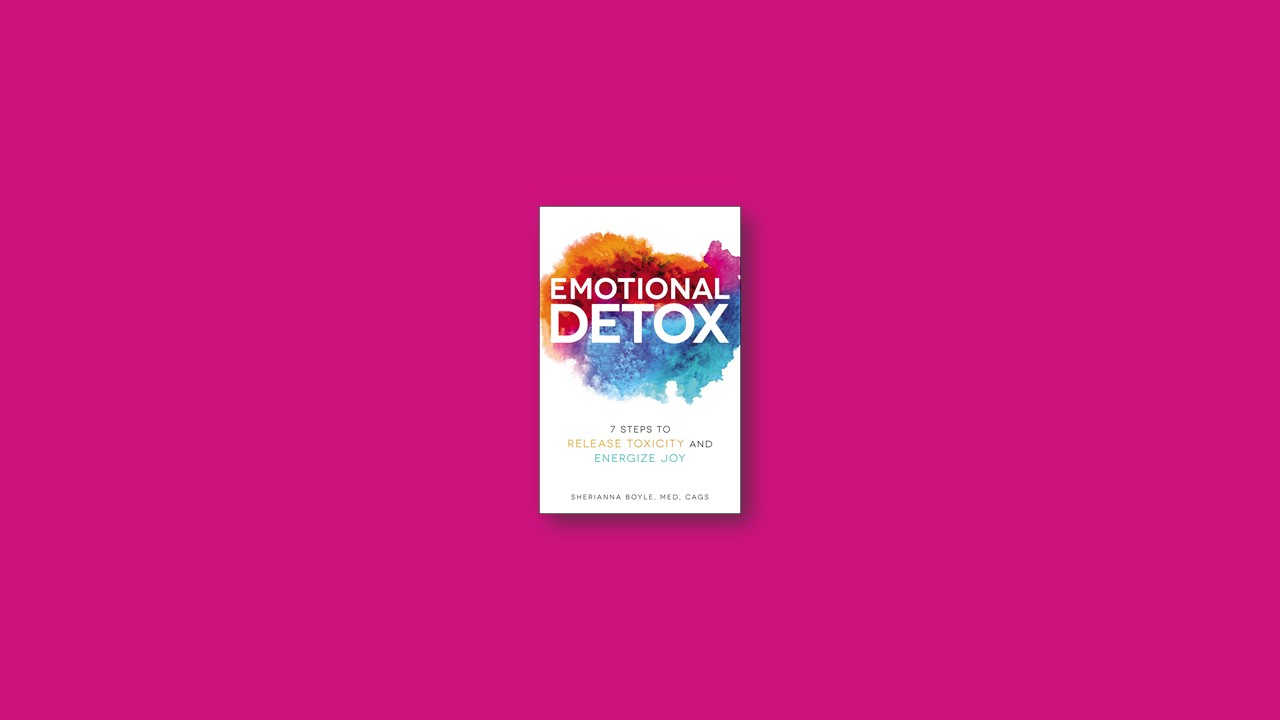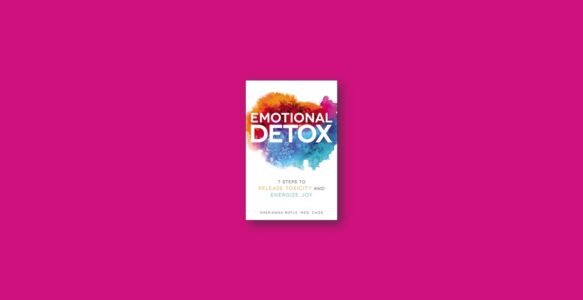Signs You Could Use a Detox
If you find yourself trying to fix everyone else’s problems, feeling guilty for saying no, or becoming less engaged with the people around you, then you will receive help from a detox. If you take more time for others than you do for yourself or have experienced trauma, a detox is in order. If you are a thinker, dwell on life’s problems, or are finding it hard to be in the present moment, an emotional detox is something to consider.
The C.L.E.A.N.S.E. Formula
When people are going through a challenging time, they tend to grab for anything within reach. They toy with different strategies and supports, hoping to find the magic one. The detox formula put together in CLEANSE acronym is not one technique but a blend of highly self-aware strategies combined into one sensible and livable formula.
- Clear
- Look Inward
- Emit
- Activate Joy
- Nourish
- Surrender
- Ease
You may have heard about the “law of attraction,” which is based on the concept that what you focus on will expand and be drawn into your life (positive or negative). The steps work in conjunction with this law; however, if there is reactivity in your body, this can spoil your efforts even if you are focusing on the positive. This is because you are ignoring your ability to read and receive the energy of your emotions. Once you strengthen this ability ( through the steps), you will be more in sync with connecting to joy, and as this occurs, something cool happens: you realize love is all there is. When reactivity is truly released, there is no negative, bad, or worse—you won’t be able to connect with that mindset because you are in a state of love and possessing the power of non-effort. Love and free will are what brought you here (into a physical body) and happen to be what will set you free. Your raw emotions connect you to this path.
#1: Clear
When our desk is chaotic and cluttered, our natural urge is to organize papers, books, and supplies to clear the way for work. Otherwise, we’ll be distracted. When it comes to an emotional detox, you can apply the same principle. The last thing we want to do is leave our emotions in a messy stack or hide them in a drawer. We remove thoughts, fears, and behaviors—the distractions from the work of noticing sensations. That’s why clearing is the first step in the C.L.E.A.N.S.E. formula.
Neuroscience shows us that when cortisol—the stress hormone—is triggered and elevated, the synaptic connections that allow nerve cells to send and receive information are suppressed and the plasticity of our brains—our ability to learn and change—is diminished. When we are reacting or in a state of fight-flight-freeze, it is difficult to change our energetic patterns within our bodies and therefore our minds. It’s easier to evolve when we’re calm.
#2: Look Inward
Looking inward promotes the skill of developing self-awareness. This is different than self-reflection. Self-reflection is when you focus on your thoughts and actions, whereas self-awareness is when you witness your feelings. One is not better than the other. Both are essential for helping you move toward your growth edge. Looking inward is about transitioning your attention from self-reflection to self-awareness. It is during this transition that your thoughts are likely to intrude on your process. In this step, you will learn the difference between self-reflection and self-awareness, when and how your ego steps in, ways to settle into your body, the skill of body dialoguing, how noticing and listening to your body heals you, and why it is important to step up your game.
#3: Emit
As you read these words, your body is working to eliminate what it does not need. It does this automatically through the functioning of your major organs, such as the kidneys, liver, and skin (sweat glands). Each cell with its own task—working hard, exchanging information, deciding how and when you are ready to release waste. Everything you ingest gets broken down in one form or another, not just food but also your thoughts. Each becomes liquefied into forms of energy. The challenge is that negative or harmful thoughts tend to be lower in vibration. This makes them heavier (like a plate of pasta) and more difficult to digest. However, as with ingesting and digesting your food, the more you relax, pause, and appreciate the process, the easier your thoughts will flow through.
#4: Activate Joy
When a battery is losing its power, some of the signs are its case is leaking, bloating, and swelling. If you were to remove an old car battery and replace it with a new one, your vehicle would run better. It might also bring you a renewed faith in your car. Rather than seeing it as old and unreliable, you might be content with keeping it around longer. Activating joy is similar. When it is leaking, life becomes robotic. You are going through the motions; however, the progress you are making may seem arduous and sluggish.
Activations are about expansion. Think of them like a kick-start. When you learn to ride a bike, you might need a little push; likewise, your energy might need a little nudge outward. To do this, you need to be aware of what you can’t see—the power of your aura—as well as practical concerns like the difference between wanting and having and joy versus happiness .
#5: Nourish
To nourish means to sustain, cherish, or keep alive. You might be accustomed to thinking of nourishment as food, the way in which you care for and feed your body. During an emotional detox, “nourish” refers to how you cultivate and respond to your relationships. Rather than with food, you will nourish your relationships with connection, insight, and new skills. Some of these skills include learning how to appreciate others, communicating your feelings (rather than thoughts), strengthening your core voice, redefining independence, expressing your needs, noticing the good in others, and granting forgiveness.
Think of those people who might go to a detox program for addiction and make great progress, but when they go out in the real world where everyone knows their history, they begin to fall apart. An emotional detox is similar. Like it or not, some people are going to expect you to react. They might even test you. Not only that but your body (energy) may be expecting you to react. This is because it hasn’t been trained otherwise. Once you raise energy by digesting your emotions and choosing joy, the next step is to introduce your body and brain to new ways of handling things. This keeps you from resorting to old ways.
#6 & #7: Surrender & Ease
Now that you have raised your energetic vibration by digesting your emotions, activated joy, and learned some new skills from the Nourish step, you are ready to put an end to old patterns. These ways of thinking and behaving don’t suit you anymore. This is because you have outgrown them. You have matured in how you handle your emotions, and therefore hanging onto old ways of reacting is pointless. Moving back to your organic self is about learning to live your life without all the additives. Only instead of chemicals and pesticides, you are learning to live without the narratives of remarks, comments, and criticisms that may have been circulating in your head. This will all help you to live with more ease.
This step is about closure. Yes, you will be saying adios to the artificial sweeteners reactivity can bring. The purpose of surrender is not to get rid of your emotions but to allow healing and wellness to come into being. So, take the final bow and let’s close the curtain on all the drama—it is time to surrender.


